1605 – Msgr. Miguel de Benavides, O.P. Archbishop of Manila, writes his last will bequeathing his personal library and 1,500 pesos for a “seminary-college,” where the religious and citizens might read the sciences of Arts and Theology.
April 28, 1611 – The college-seminary of Nuestra Señora del Santisimo Rosario is founded by Dominican missionaries after a humble endowment of P7,140.
April 16, 1617 – The college becomes an independent unit from the Dominican convent, changing its name to Colegio de Santo Tomas. Courses in Grammar, Arts, and Theology are held for only 12 students.
1619 – The first school building is inaugurated in Intramuros. Scholarships are granted to 12 students. In the same year, Pope Paul V signs the Apostolic Brief, Carissimo in Christo, authorizing all colleges administered by the Dominicans in the “Occidental Indies” to grant Philosophy and Theology degrees.
1645 – Pope Innocent X issues the Papal bull, In Superiminenti, raising the Colegio to the rank of University.
1680 – UST is placed under royal patronage of the Spanish monarchy.
1681 – Pope Innocent XI declares UST a Public University of General Studies, allowing it to confer other degrees.
September 2, 1734 – the Faculty of Civil Law is established. In the same year, Pope Clement XII authorizes the University to confer degrees in all existing faculties, as well as others that might be introduced in the future.
1768 – The expulsion of the Society of Jesus from all Spanish territories leaves UST as the only institution of higher learning in the Philippines.
1785 – UST is given the title “Royal University” as a reward for voluntarily sending its students for the military defense of Manila during the recurrence of war between France and Spain against England
May 20, 1865 – a Royal order from Queen Isabella II hands over the supervision of all educational institutions to UST. The decree for the revamp brings about major changes to the University, which becomes the Bureau of Education of the Philippines with its rector as its director.
1870 – Threatening the existence of the University, Dr. Segismundo Moret, the Spanish Minister of Colonies, issues two decrees that totally overhauls the educational system of the country. The first decree abolishes all secondary schools and places them under a single “Instituto Filipino” while the second converts UST into the “University of the Philippines.”
May 1871 – the oldest pharmaceutical educational institution is established in the country, the Faculty of Pharmacy, by virtue of the modification of the Moret decree.
1872 – the name of UST is officially changed to Royal and Pontifical University of the Philippines after the assent of Spain.
1896 – the faculties of Science and Philosophy and Letters are opened. Two years after, the University is closed for a year with the arrival of the Spanish-American war in the country.
August 9, 1898 – as a measure to save the University in case of the surrender of Manila to the Americans, the Dominicans decide that the UST building and properties in the Intamuros campus be “sold” to Secretary General Blas Alcuaz with the deed of sale written by UST Rector Fr. Santiago Paya, O.P. The amount assessed is P512,327.
1899 – the University first operates under the new American government headed by the five-man Schurman Commission.
May 18, 1907 – the Faculty of Engineering is established.
July 18, 1911 – Francisca Bustamante Bayot donates to the Dominicans 20 hectares from her two million square-meter property in Sulucan (Sampaloc area) in time for the celebration of the University’s Tricentenario on December 16.
December 18, 1911 – On Day Two of the tricentennial celebration, officials and guests lay the symbolic cornerstone at the new Sulucan campus designed by Fr. Roque Ruaño, O.P. Father Ruaño later designs the Main Building, the first earthquake-proof structure in the country.
1916 – The American government grants official recognition to the faculties of Civil Law (February 7), Medicine and Surgery (February 28), and Pharmacy (May 3).
October 6, 1921 – The Liga Catolica, the forerunner of the present National Collegiate Athletic Association, is organized as the first athletic league in the country through the efforts of UST, in collaboration with Ateneo de Manila, De La Salle, Colegio de San Juan de Letran, and the College of San Vicente de Paul. In July 12 of the same year, the Faculty of Engineering is officially recognized by the government.
February 5, 1924 – Fr. Manuel Arellano, O.P., Rector of UST, announces that, for the first time in its long history, UST will start admitting women to the Faculty of Pharmacy, beginning school year 1924-1925. Twenty-four women enroll. Other colleges follow suit.
1925 – UST becomes one of the first universities in the Philippines to implement the use of the English language as the medium of instruction, replacing Spanish.
June 1926 – The College of Education is opened at the Intramuros campus.
January 16, 1928 – The first issue of the Varsitarian, the official student publication of UST led by Jose Villa Panganiban and members of the Literary Club, comes out. On June 6, the UST High School is established.
November 13, 1927 – The newly constructed, P1.5-million Main Building is solemnly blessed by Apostolic Delegate Msgr. Guglielmo Piani, with Elizabeth Bowers, a first year Philosophy and Letters student, and First Lady Doña Aurora Quezon as co-sponsors.
November 11, 1929 – the College of Education is officially recognized.
1930 – The University builds additional buildings, first with the construction a one-storey building near Dapitan Street for Medicine and Anatomy classes.
1931 – the Dominican Provincial Chapter approves the construction of the UST Central Seminary building, which would serve as the Father’s Residence.
August 28, 1932 – Governor General Theodore Roosevelt Jr. inaugurates the P70,000 UST Gymnasium. In the same year, permission to admit women in the Faculty of Medicine and Surgery and the new College of Commerce is granted.
March 7, 1933 – Senate President Manuel L. Quezon opens to the students the P25,000 UST swimming pool. On the same year, the UST Central Seminary building is completed and blessed on November 12.
March 1, 1935 – Fr. Ruaño dies of a heart attack. His last words were a Latin phrase from an old liturgy: Qui salvandos salvas gratis (You give us salvation free). On March 7, the National Historical Commission unveils a marker at the Main Building as a tribute to Fr. Ruaño’s legacy.
December 8, 1941 – the Philippines suffers under the hands of Japanese forces during World War II. When Manila is declared an open city, the American Emergency Committee headed by Frederic Stevens requests the Dominican Fathers to let the Sampaloc campus serve as an internment camp for prisoners of war. The prisoners occupy the Main Building, Education Building, and the gymnasium. Shanties are also built as shelter. Intramuros, meanwhile, is destroyed, including the original UST campus.
1945 – After the war, UST reopens. But the destruction of the Intramuros campus forces UST to move completely to Sampaloc.
March 7, 1946 – UST Hospital is opened. On November 13, the Benavides Monument is re-erected inside the UST campus in Sampaloc.
1947 – Pope Pius XII bestowed upon UST the title of “the Catholic University of the Philippines” through the decree Sacrae Congregationis Seminariis et Studiorum Universitabus.
December 20, 1949 – The UST lot in Intramuros is sold to the Philippine American Life Insurance Co.
July 1953 – The statues atop the Main Building are erected.
March 6, 1966 – The UST Hospital Clinical Division, or charity ward, is inaugurated.
1969 – The Academia, the official international bulletin of the University, is first released. Its initial 3000 copies contain news on the academe such as announcements from the administration and scholarship grants. The following year becomes a very significant one not only to UST but to the Philippines with the visit of Pope Paul VI.
1971 – Thomasians witness the installation of the first Filipino rector, Fr. Leonardo Legaspi, O.P. With the imposition of Martial Law the following year, the Varsitarian, the official student publication of UST, is suspended for several months, but later revived.
1977 – Pautakan, the intercollegiate quiz contest of the University, is organized by the Varsitarian. It has become the longest-running quiz contest in the country.
February 18, 1981 – Pope John Paul II, in his first Papal visit to the country, visits UST and calls it an “illustrious university.”
1987 – After the glorious 1986 “People Power” revolution that toppled the 20-year Marcos regime, President Corazon Aquino is conferred the degree Doctor of Laws, Honoris Causa, and the UST Golden Cross, the highest award given by the University.
1991 – the first-ever University-wide Christmas celebration is held with the theme, “Paskong Tomasino, Paskong Filipino ’91.” In 1993, it becomes the annual “Paskuhan.”
January 13, 1995 – UST is again visited by Pope John Paul II. On January 6 to 10, the Fifth International Youth Forum is held in the campus with 253 young Catholics from all over the world.
1997 – The UST Growling Tigers win their fouth straight UAAP basketball championship since 1993, establishing a “four-peat” record.
2000 – UST joins the Jubilee year celebrations, praying the rosary with the Pope via video hook-up. The College of Architecture and Fine Arts are split into two different colleges, namely the College of Architecture and the College of Fine Arts and Design (CFAD). Fr. Isidro Abano, O.P. is appointed as CFAD’s first dean and the regent of the two colleges. The Institute of Physical Therapy, now College of Rehabilitation Sciences, is elevated to college status.
March 18, 2001 – Nineteen-year-old Mechanical Engineering student Mark Welson Chua, who had exposed corruption in the University’s military training program in an interview with the Varsitarian, is found dead and decomposing in the Pasig River. This leads to a nationwide clamor to abolish the Reserved Officers Training Corps or ROTC course.
2003 – Freshmen start a tradition of passing through the Arch of the Centuries, called the Thomasian Welcome Walk.
November 10, 2004 – the College of Accountancy is separated from the College of Commerce and Accountancy (Commerce) and named UST-Alfredo M. Velayo College of Accountancy after Alfredo Velayo, one of the founders of top accounting firm SGV & Co.
2005 – The USTv Students’ Choice Awards is established.
2006 – The Institute of Tourism and Hotel Management is established, separating from the College of Education. The name of the college is changed into College of Tourism and Hospitality Management three years later.
2006 – UST sees the rise of the Tan Yan Kee Student Center, the Multi-Deck Carpark, the Quadricentennial Park, and the Benavides Cancer Institute.
2007 – The top three officials of the University–Rector Fr. Ernesto Arceo, O.P.; Fr. Edmund Nantes, O.P., the prior provincial of the Philippine Dominican Province and the UST vice chancellor; and Vice Rector Fr. Juan Ponce, O.P. resign over the Dominican Order’s decision to downscale the redevelopment of UST Hospital. The Master of the Order of Preachers, Fr. Carlos Alfonso Azpiroz Costa, O.P., declares the “separation and incorporation” of the hospital in 2004 and the P3-billion loan to build a 19-story hospital tower “unlawful” based on canon law. Fr. Rolando De la Rosa, O.P is named Acting Rector.
May 2008 – Fr. Rolando V. de la Rosa, O.P is proclaimed Rector of UST for the second time. Father De la Rosa was previously University rector for two consecutive terms, 1991-1994 and 1995-1998. The 95th rector, Fr. De la Rosa also serves as the Quadricentennial Rector of UST.
September 26, 2009 – UST suffers from the rage of storm Ondoy as thousands of students and officials are stranded in the University. The countdown to 400 years of UST begins on December 18, 2009 during the Paskuhan.
2011 – The world witnesses the grand celebration of the University’s 400 years of unending grace. Grand events such as international conferences, concerts, parades, homecomings, and of course, magnificent fireworks, highlight the University’s celebration. A new monument, the Quattromondial, is unveiled as a symbol of the University’s contribution to Church, civilization, and country. Patricia Isabela B. Evangelista, Danalyn T. Lubang, and Alexis Ailex C. Villamor

Sources:
Torres, Jose Victor (2007) In Transition: The University of Santo Thomas During the American Period
De Ramos, Norberto (2000) I walked with Twelve UST Rectors
The Thomasian Planner
Varsitarian archives

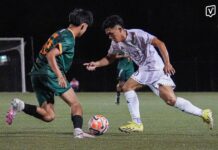
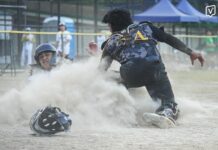

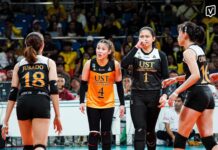

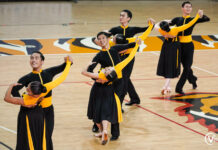
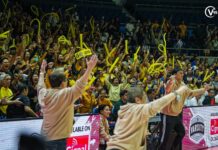










You forgot to include the year 1902 when Pope Leo XIII declared UST a Pontifical University.
Why was Fr. Tamerlane Lana not even mentioned in this article? He had done so much for the university during his time. I believe this is also the view of so many Thomasians students and staff alike. Why was he overlooked when he had also achieved so much for the school? This is unfortunate.